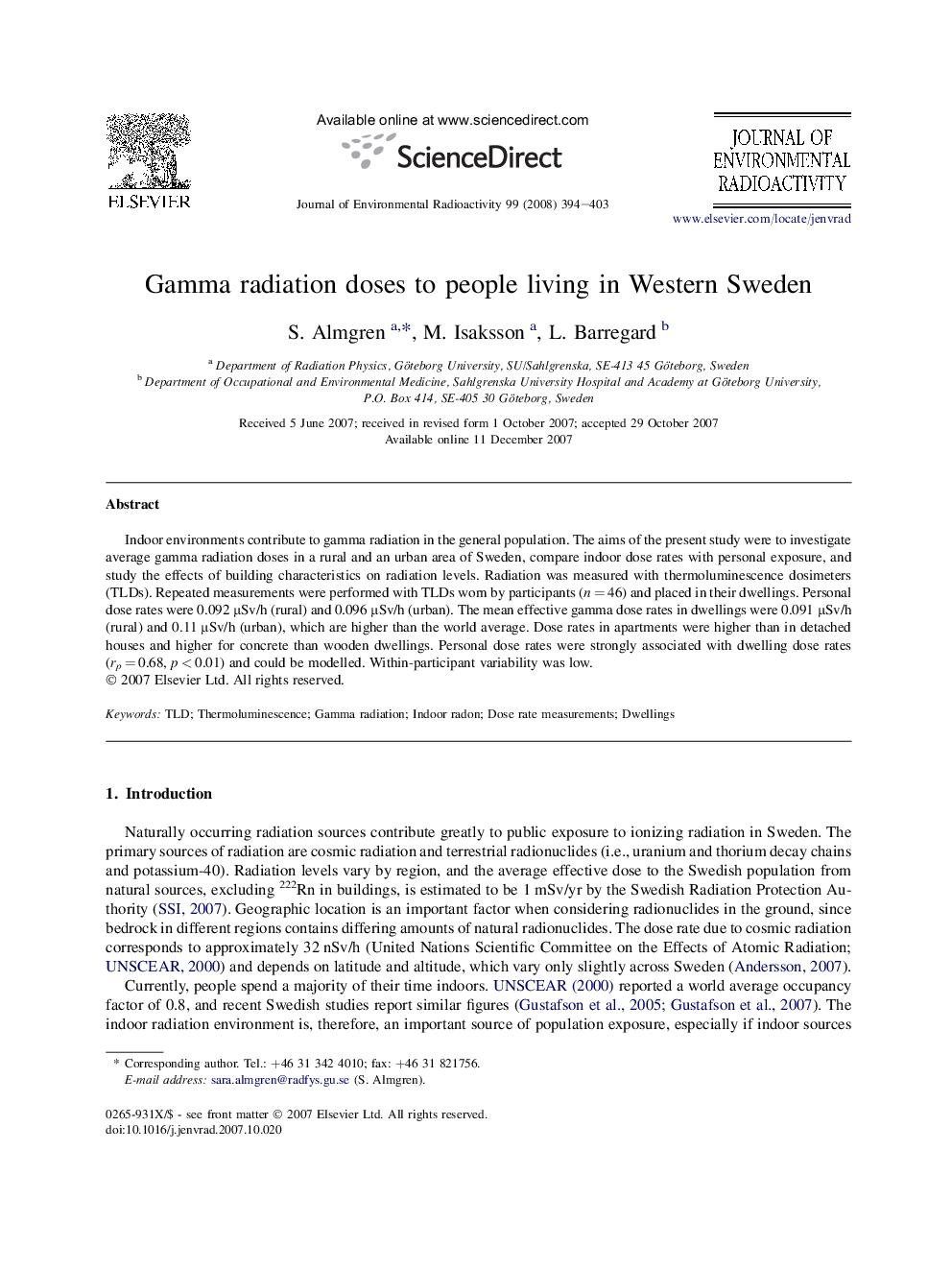| Article ID | Journal | Published Year | Pages | File Type |
|---|---|---|---|---|
| 1739190 | Journal of Environmental Radioactivity | 2008 | 10 Pages |
Indoor environments contribute to gamma radiation in the general population. The aims of the present study were to investigate average gamma radiation doses in a rural and an urban area of Sweden, compare indoor dose rates with personal exposure, and study the effects of building characteristics on radiation levels. Radiation was measured with thermoluminescence dosimeters (TLDs). Repeated measurements were performed with TLDs worn by participants (n = 46) and placed in their dwellings. Personal dose rates were 0.092 μSv/h (rural) and 0.096 μSv/h (urban). The mean effective gamma dose rates in dwellings were 0.091 μSv/h (rural) and 0.11 μSv/h (urban), which are higher than the world average. Dose rates in apartments were higher than in detached houses and higher for concrete than wooden dwellings. Personal dose rates were strongly associated with dwelling dose rates (rp = 0.68, p < 0.01) and could be modelled. Within-participant variability was low.
